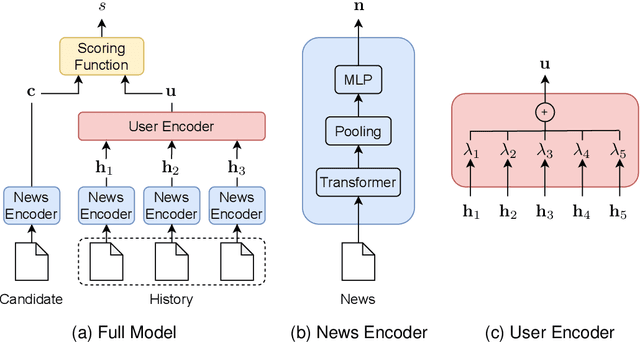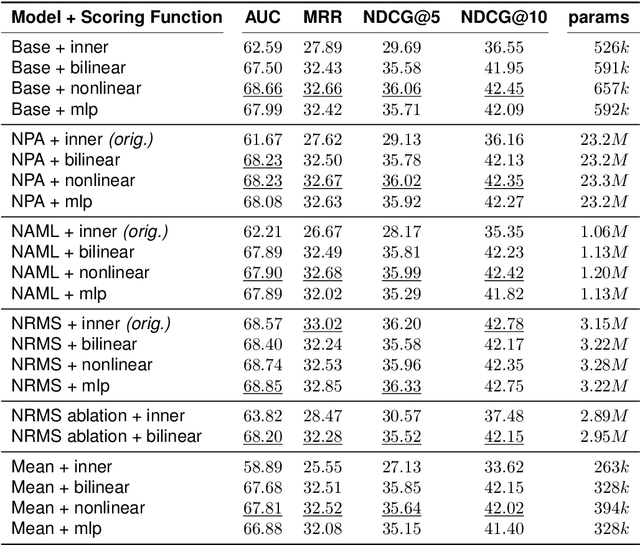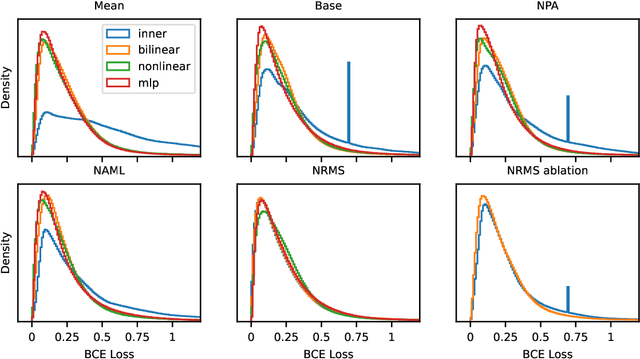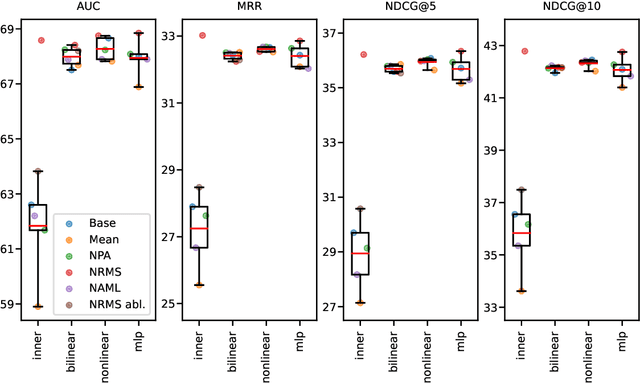Understanding the Relation of User and News Representations in Content-Based Neural News Recommendation
Paper and Code
Jul 29, 2022



A number of models for neural content-based news recommendation have been proposed. However, there is limited understanding of the relative importances of the three main components of such systems (news encoder, user encoder, and scoring function) and the trade-offs involved. In this paper, we assess the hypothesis that the most widely used means of matching user and candidate news representations is not expressive enough. We allow our system to model more complex relations between the two by assessing more expressive scoring functions. Across a wide range of baseline and established systems this results in consistent improvements of around 6 points in AUC. Our results also indicate a trade-off between the complexity of news encoder and scoring function: A fairly simple baseline model scores well above 68% AUC on the MIND dataset and comes within 2 points of the published state-of-the-art, while requiring a fraction of the computational costs.
 Add to Chrome
Add to Chrome Add to Firefox
Add to Firefox Add to Edge
Add to Edge